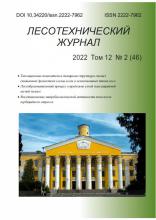The analysis of the status of authorized and unauthorized landfills of Bryansk is made. Near landfills oppression of herbaceous vegetation, damaging trees by necrosis and chlorosis, dieback, bending trunks, overcrowding shoots, young leaves early yellowing, staining red veins is registered, as well as parts of plants burning and poisoning by toxic products of combustion due to frequent fires. Distribution and the massive growth of eurytopic ruderal plants in landfills are observed. Simultaneously there is depression and extinction of unstable species of natural flora. In the process of urbanization there is simplification of phytocenological structure and aging of zonal flora features. To ensure proper environmental situation in the areas of solid waste landfills in Bryansk it is necessary to carry out restoration with the cultivation of plants that are resistant to the effects of heavy metals, environmental pollution, which are relevant to environmental conditions of the Bryansk Region, site location, have a high capacity for gas, noise reduction, dust precipitation and phytoncidal properties. It is advisable to plant trees, performing economic and safety, sanitation, landscaping and recreational functions. When selecting a range of grasses, trees and shrubs that can grow in contaminated soils, we offer to take into account the bioavailability of soil and location of recultivated land, biological properties of plants, the purpose of the plantations, the complex and features of preremediation.
municipal solid waste, necrosis, chlorosis, eutrophication, toxicants, reclamation, reclamation, range of plants, noise reduction, dust precipitation, bioavailability of soil.
Проведён анализ состояния санкционированных и несанкционированных свалок г. Брянска. Целесообразно создание лесонасаждений, выполняющих хозяйственно-защитные, санитарно-гигиенические, озеленительные и рекреационные функции. При подборе ассортимента трав, древесных и кустарниковых пород, способных расти на загрязненных почвах, предлагаем учитывать биопригодность почвы и местоположение рекультивируемого участка, биологические свойства растений, целевое назначение насаждений, комплекс и особенности предварительно проведенных восстановительных мероприятий.
Ключевые слова: твердые бытовые отходы, некроз, хлороз, эвтрофизация, токсиканты, фитомелиорация, рекультивация, ассортимент растений, шумопоглощение, пылеосаждение, биопригодность почвы.
1. Zhukovskiy, P. M. Botanika. [Tekst] : ucheb. / P. M. Zhukovskiy. - Izd. 3-e, pererab. i dop. - M. : Sovetskaya nauka, 1949. - 552 s.
2. Lutsevich, A. A. Vozdeystvie tverdykh bytovykh otkhodov na okruzhayushchuyu sredu urbanizirovannykh territoriy g. Bryanska [Tekst] : monografiya / A. A. Lutsevich. - Bryansk, 2010. - 131 s.
3. Instruktsiya po proektirovaniyu, ekspluatatsii i rekul´tivatsii poligonov dlya tverdykh bytovykh otkhodov. Utver. Ministerstvom stroitel´stva Rossiyskoy Federatsii 2 noyabrya 1996 g.
4. SP 2.1.7.1038-01. Gigienicheskie trebovaniya k ustroystvu i soderzhaniyu poligonov dlya tverdykh bytovykh otkhodov - Vzamen San PiN 2.1.7.722-98: utv.30.05.01. [Tekst] - M. : Feder. tsentr gossanepidnadzora Minzdrava Rossii, 2001. - 16 s.
5. Smetanin, V. I. Rekul´tivatsiya zemel´: obzor tekhnologiy [Tekst] / V. I. Smetanin. Ekologiya i promyshlennost´ Rossii, 2004. - № 5. - S. 42-45. EDN: https://elibrary.ru/WNSBTL
6. Shimanyuk, A. P. Dendrologiya [Tekst] / A. P. Shimanyuk. - M. : Lesnaya promyshlennost´, 1974. - 264 s.












